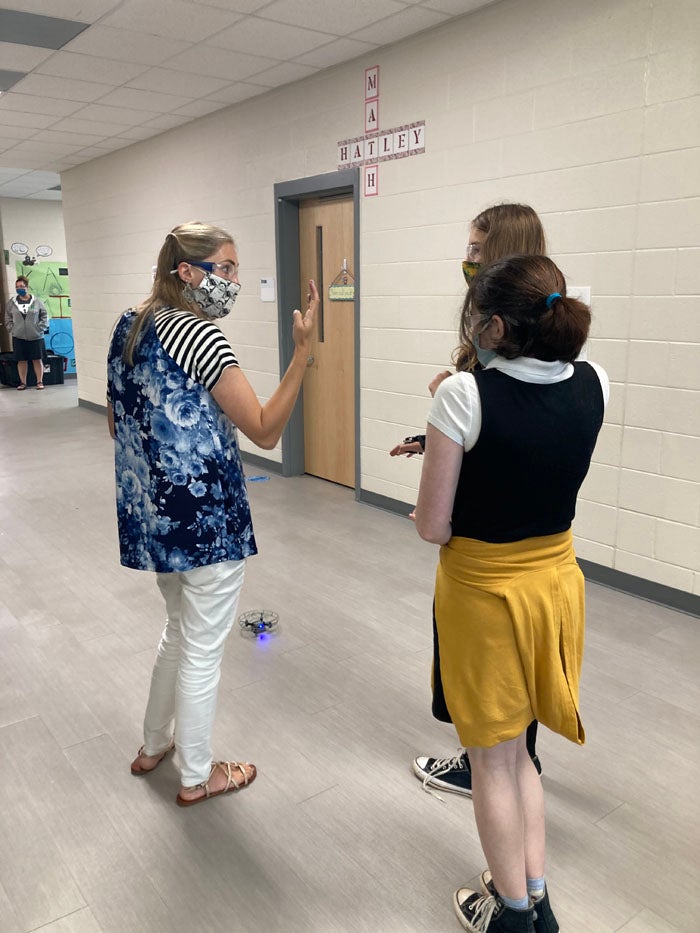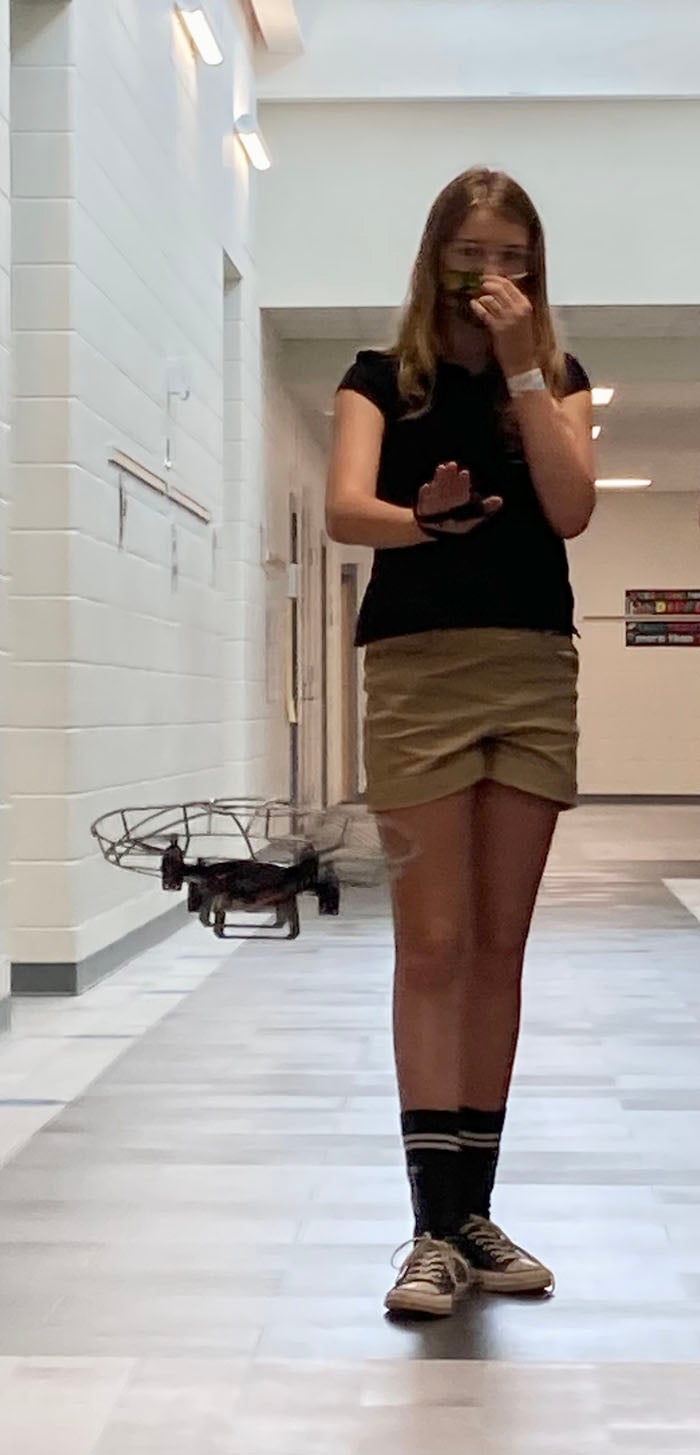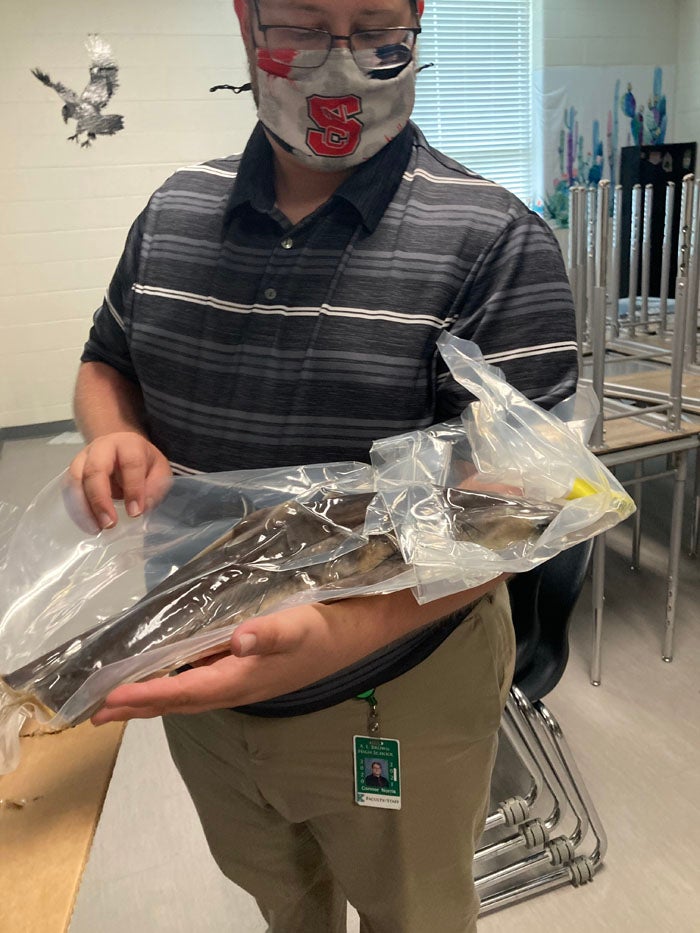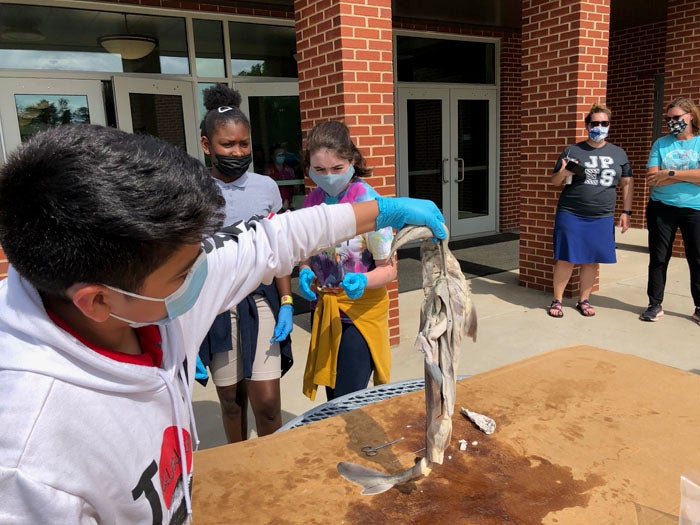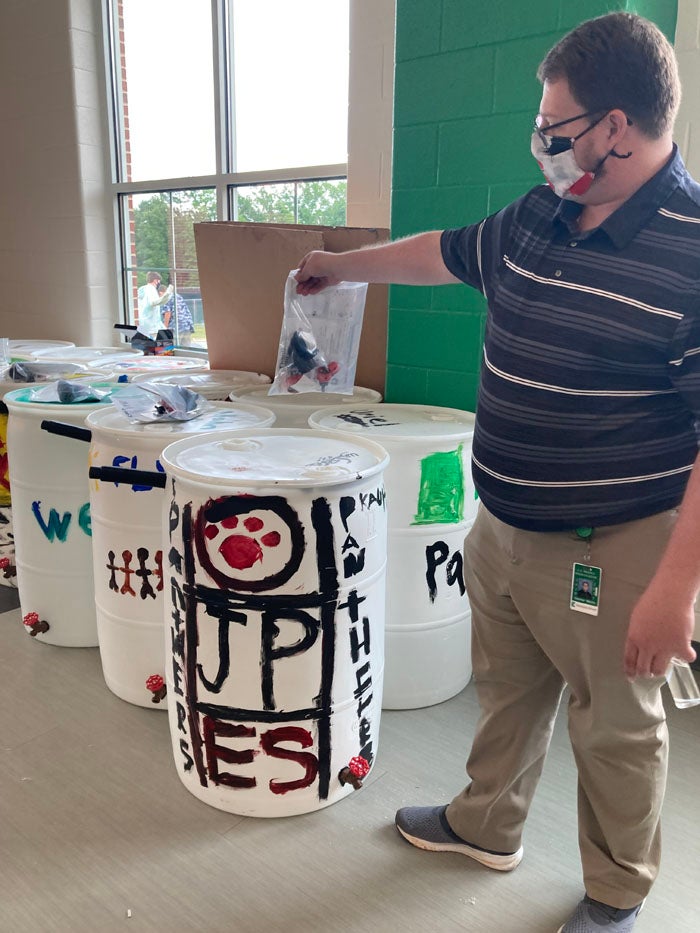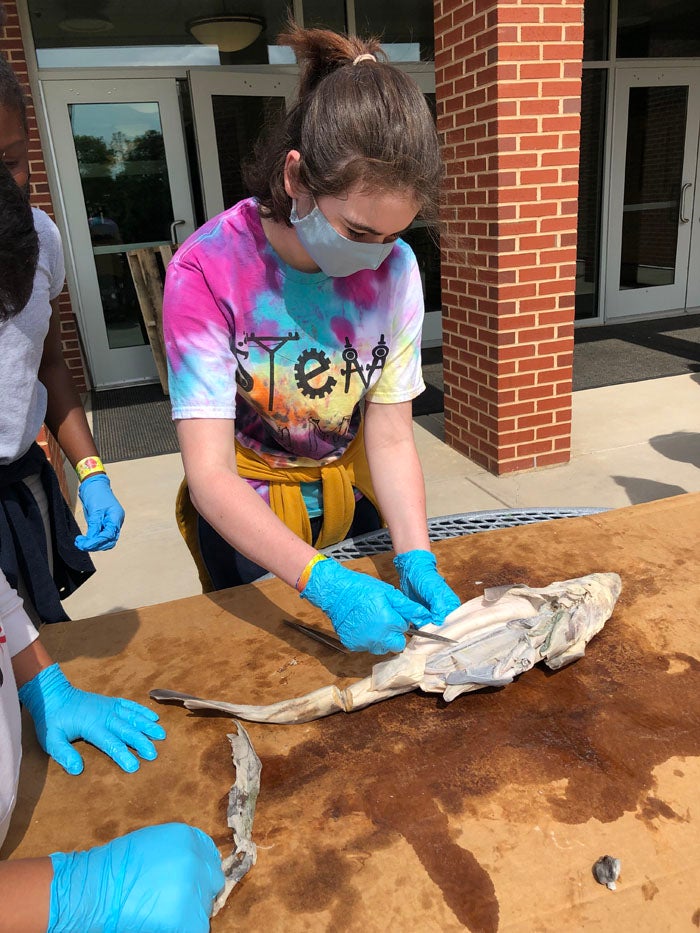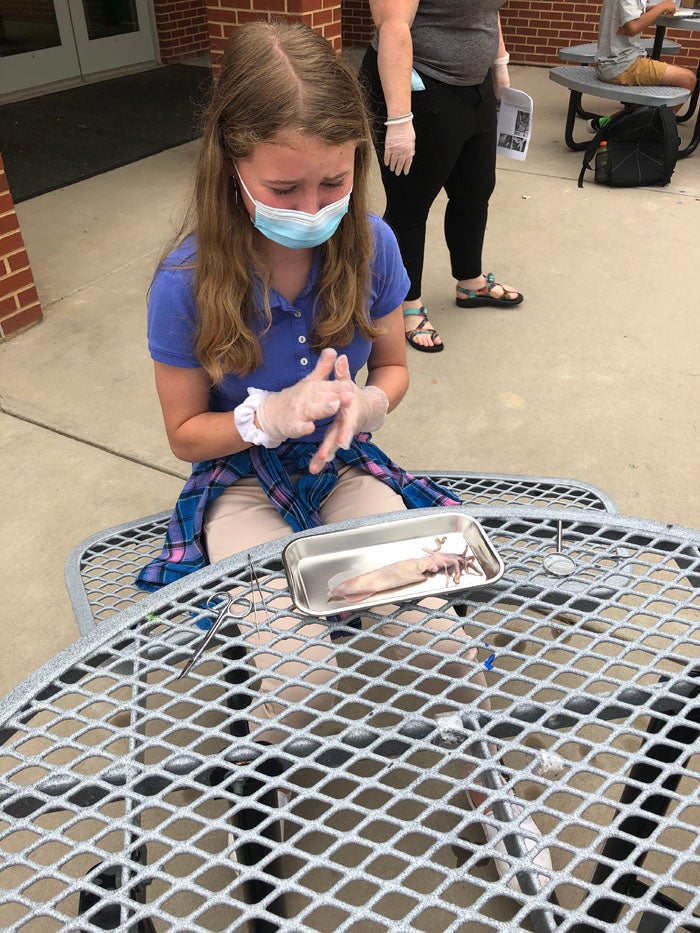Squids, drones and boats, oh my! Students put brainpower to work during STEM Camp
Published 12:00 am Thursday, June 10, 2021
By Joanie Reeder
For the Salisbury Post
KANNAPOLIS – In an empty hallway at Kannapolis Middle School on Tuesday, a young girl slowly moved her hand through the air, waving it back and forth and flipping it from side to side. In response, a small drone flew through the air mimicking her hand movements, dipping and swaying as the girl moved.
Excited students, each wearing a small remote control on their wrist, were staged in pairs throughout the hall as they controlled their own drones with hand movements. As students exclaimed, “That’s so cool” and “Do a flip,” teachers held neon paper up to signal if a stranger was walking down the hall so students could be extra careful not to hit anyone with the drones.
The students were part of the Kannapolis City Schools STEM Camp. STEM stands for science, technology, engineering and math. During the weeklong camp, rising sixth-, seventh- and eighth-grade students got in-depth and hands-on experience in each area of STEM.
Sybella Honeycutt and her partner passed the remote back and forth, practicing movements and flips for an obstacle course race the students would be required to complete after lunch. The drone activities were some of the students’ favorite activities so far during the camp – but that was only Tuesday.
During the week, students learned about soil and water conservation and other plant biology; dissected squids, sharks and sheep eyes; built cities out of recycled cardboard and tested them for natural disasters using fans and shake tables to mimic wind storms and earthquakes; and sculpted and 3-D printed Minecraft characters before coded the creatures into their own Minecraft games. Students also baked solar oven s’mores, made balsa wood boats to float in a stream near the school, used virtual reality goggles and explored how art relates to STEM. The camp is the most comprehensive and encompassing approach to STEM many of the students have experienced.
“I used to do STEM in elementary school, and I’ve always wanted to be an engineer,” Sybella said.
Already interested in STEM, Sybella is ready to break more glass ceilings when she graduates college and becomes an engineer. She anticipates that by then more women will be in STEM.
“When you look at a stereotypical engineer, you see a guy,” she added. “I’m trying to change that.”
The camp was designed for any students interested in STEM, but the U.S. Census states women make up almost half of the nation’s workforce but only 27% of STEM workers. It’s a concern that teachers hope they can address for girls attending the camp.
“Girls tend to not come into the STEM field, so that’s always a concern,” said Stacie Bunn, instructional coach at Jackson Park Elementary School and STEM Camp director.
Although statistics prove more work needs to be done to recruit women to STEM careers, most of the teachers helping during the camp were women. Connor Norris boasts being the only male teacher assisting during camp.
Norris, a graduate of N.C. State University and science teacher at A.L. Brown High School, spent the week teaching students about water quality and water ecology, attributes of predator and prey, and other water conservation efforts. Norris also took the opportunity to teach the students they don’t have to spend a lot of money on the tools of STEM. Students designed rain barrels that will be donated to each of the elementary schools to water school gardens, built hydroponic plant systems and even made their own hand sanitizer.
The main purpose of organizing the camp was to get students interested in STEM and its careers. The idea has floated around for years and recently funded by the Kannapolis Education Foundation and Elementary and Secondary School Emergency Relief (ESSER) funds, part of the Coronavirus Aid, Relief and Economic Security (CARES) Act, the Coronavirus Response and Relief Supplemental Appropriations (CRRSA) Act and the American Rescue Plan (ARP) Act during the past year. Funds were available to close the achievement gap caused by COVID-19.
KCS leaders used the funds to provide technology and supplies that were not already on-hand. Because teachers naturally gravitated toward the STEM fields they specialized in during the school year, they already had many supplies available.
School teachers throughout the system will be able to use the new supplies such as the VR goggles and other technology during the school year after proper training. This will enable students throughout the system who were unable to take advantage of STEM Camp to get similar hands-on learning in their regular classrooms.
“We are experiencing the knowledge where our students are, without them having to go anywhere,” Bunn said. “We basically just want to get students interested and enjoying STEM.”
The STEM Camp has proven to be a huge success in that. During the afternoon obstacle course races, Sybella and her partner came in first.


